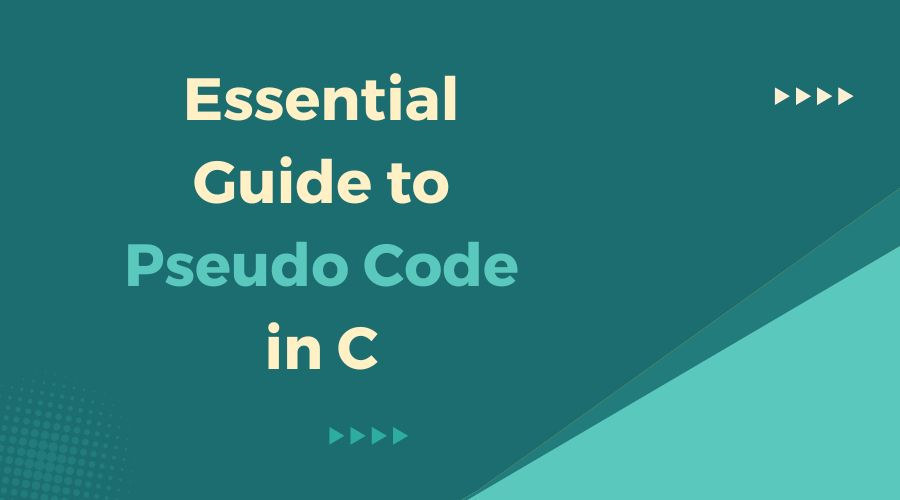Pseudo code is a foundational concept in programming, acting as a link between human-readable instructions and computer-executable code. Understanding pseudo code is essential for developing effective and well-organized code, whatever your experience level. In this article, we’ll go over the fundamentals of pseudo code in the context of the C programming language, using simple explanations and practical examples to help you on your coding journey. Now let’s get started!
Table of Contents
What is Pseudo Code?
Pseudo code is a programming-like language representation of algorithms or steps that is easier for humans to read and understand. It’s universal in that it isn’t dependent on any particular programming language.
Imagine you’re explaining how to make a sandwich to someone who has no cooking experience. Instead of using complex cooking terms or a specific recipe, you’d simplify it down into easy steps like ‘take two slices of bread, add cheese and the ham, then put the slices together’. Pseudo code works similarly, allowing programmers to prepare their logic before writing actual code.
Why is Pseudo Code Important in Learning C Programming?
- Simplicity: Pseudo code eliminates difficult terminology, allowing beginners to understand programming principles without worrying about the complexities of a programming language such as C.
- Clarity: Pseudo code focuses on a program‘s logic and structure rather than syntax, allowing programmers to explain ideas more effectively and clearly.
- Planning and Problem Solving: Before you start creating actual code in C, you should map out the stages your programme will take. Pseudo code helps in the breakdown of problems into smaller, more manageable tasks, which may then be readily turned into actual code.
- Flexibility: Because pseudo code isn’t bound by the rules of a specific programming language, programmers can experiment with many approaches and algorithms before committing to writing code in C.
- Debugging: Because pseudo code is based on logic rather than syntax, it can help detect problems and errors in the program’s logic early on, saving time and effort throughout the actual coding process.
Basics of Pseudo Code: Syntax and Structure
Understanding the syntax and structure of pseudo code is fundamental since it acts as a blueprint for designing algorithms before they are translated into a specific programming language such as C.
Syntax:
- Pseudo code does not follow strict syntax rules like programming languages, but it aims to be readable and understandable by humans.
- Make use of simple English terms and expressions.
- Every sentence should begin with an action verb.
- When representing block structures (loops, conditionals, etc.), indentation is frequently used.
Structure:
- Begin with a Clear Goal: Determine what you want to achieve with your algorithm.
- Break Down the Problem: Divide the problems into smaller, more manageable jobs.
- Write Step-by-Step Instructions:
- If necessary, begin with an initialization.
- Describe your algorithm’s essential steps in simple, sequential order.
- Use control structures such as loops and conditionals as necessary.
- End with output or result. Determine how the algorithm should generate its output or result.
Example:
Let’s say we want to write a pseudo code algorithm to find the sum of the first 10 natural numbers.
Start
Initialize sum = 0
Initialize counter = 1
Repeat until counter is greater than 10
Add counter to sum
Increment counter by 1
End Repeat
Display sum
EndIn this example:
- We begin by defining our goal (finding the sum of the first ten natural numbers).
- The issue is divided into three steps: setting up variables, adding till a condition is satisfied, and displaying the results.
- Each step is described in simple language and follows a clear set of instructions.
- We end up with the desired result, which is the total of the numbers.
- This pseudocode can then be readily translated into any programming language, such as C, while maintaining its logic and structure.
Do’s and Don’ts to Pseudo Code Writing

